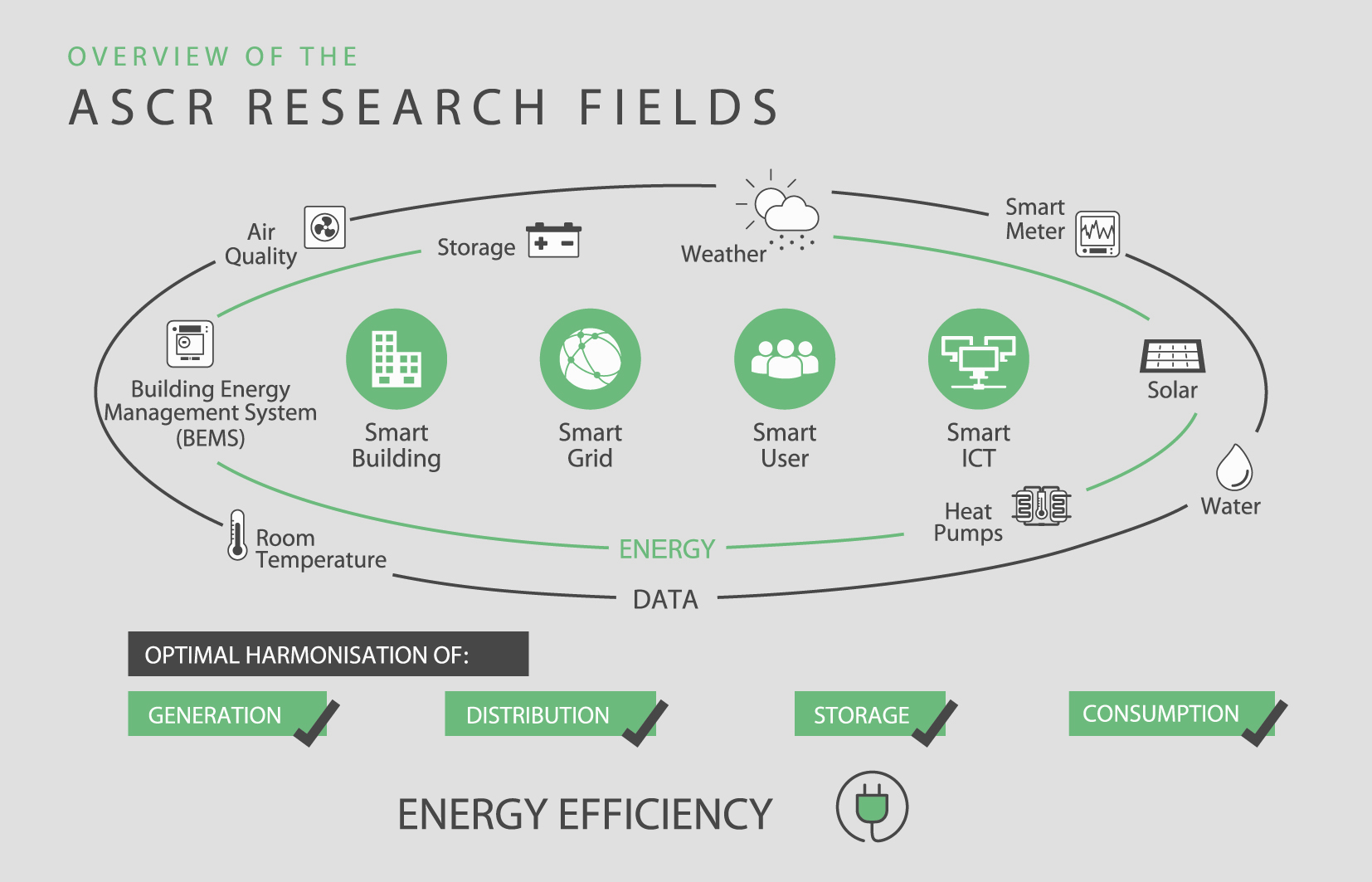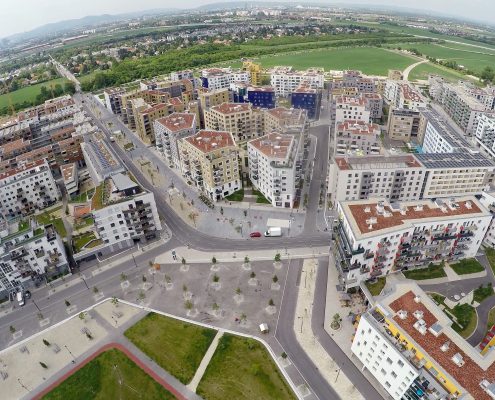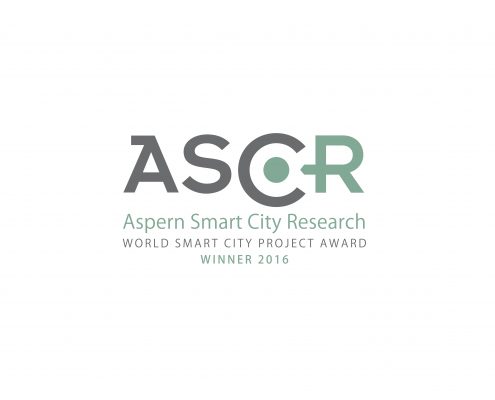Aspern Smart City Research (ASCR), Europe’s biggest energy research project, has been conducting applied research at the aspern Seestadt urban development area since 2013. The research association – a joint venture by Siemens Österreich, Wien Energie, Wiener Netze and the City of Vienna (Vienna Business Agency and Wien 3420) – pursues an integrated approach, with over 100 researchers from a range of different fields using vast quantities of real-time data from aspern Seestadt to analyse interactions and correlations between user behaviour and building technology in energy-efficient buildings. The buildings analysed simultaneously produce and consume energy and are integrated into a smart power grid.
In the residential building, for example, air from the underground car park is recycled to provide underfloor heating in the 213 dwelling units. ASCR also studies the use of Building Information Modelling (BIM) in the planning and construction phase as well as in ongoing day-to-day operation. Building Information Models are digital twins that grow with the building and have great potential in terms of energy efficiency, innovative construction methods and facility management. The Smart Charging research focus is expediting the development of a smart charging infrastructure which interacts with the vehicle, local energy production facilities, the power grid and lastly the energy markets, the aim being to come up with charging strategies that are environment friendly and customer focused as well as useful to the grid.
A focus on people
ASCR is currently using this “urban lab” for small-scale testing of 17 Smart City applications with the potential for future roll-out across Vienna and beyond. To date, ASCR has supplied answers to over 60 research questions, developed 15 prototype solutions in the fields of smart buildings and grid infrastructure, and filed applications for 11 patents. The central question is how urban buildings can be powered by renewable energy – some of which is locally produced and stored – and how to make these energy systems more efficient and climate friendly. Another focus is on how a data-based smart grid can help match energy production across multiple buildings to the daily fluctuations in power consumption. The 111 Seestadt households and research objects participating in the project supply their daily energy use data via a home automation system for practical control purposes.
Four focal points within the overall picture
In line with the Smart City Wien Framework Strategy, ASCR analyses the production, distribution, storage and consumption of energy from an integrated perspective:
Smart Building: A residential building, a student residence, a school campus, a modern workplace environment in the form of a technology centre, and an office building with a multifunctional in-house car park have been equipped with photovoltaic installations, solar thermal and hybrid systems, heat pumps and various thermal and electrical storage systems, meaning that they not only consume energy, but also produce and store it. Most buildings are not yet able to look into the future. Having said that, however, smart building control systems will soon be able to predict energy requirements on the basis of weather forecasts and other data – ASCR already has successful prototypes in operation. These systems can also provide information on the condition of the building to help plan pre-emptive maintenance measures.
Smart Grid: 12 network stations, 24 transformers, 5 grid storage systems and numerous sensors form the basic infrastructure of the ASCR smart grid testbed. The aim here is to reduce grid operating costs, increase the number of renewable energy sources and maximise efficiency and security of supply for the prosumer, the building and the market.
Smart ICT: Complex ICT systems monitor and control the distribution, consumption, storage and onward transmission of energy. In compliance with the data privacy legislation, these systems process all data collected from the buildings and the grid (temperature, airflow, power consumption, voltage, etc.), as well as third-party data (e.g. weather forecasts, etc.). The key factor here is amalgamation and cross-checking of the data from all four domains, which ASCR uses to digitally simulate energy solutions and optimisation measures.
Smart User: 111 participating households have explicitly consented to make their energy consumption data available for research purposes. A team of social scientists are also involved in the research project. ASCR’s research aim in terms of Smart Users is to develop practicable solutions for everyday use that create true added value for residents while helping them save energy.
Joint research project extended until 2023
The ASCR research venture was founded by Siemens AG Austria (44.1%), the City of Vienna – municipal infrastructure and utilities operators Wien Energie GmbH (29.95%) and Wiener Netze GmbH (20%), Vienna Business Agency (4.66%) – and Wien 3420 Holding GmbH (1.29%). The core focus of the project is on pre-emptive building automation and leveraging the energy flexibility of buildings in the energy market. ASCR is also developing new methods for the assessment of grid status and grid planning.
In 2016, ASCR won the international World Smart City Award for “Best Smart Project”. In 2018 the project partners agreed to extend the project by a further five years, until 2023. In this current phase, ASCR’s research activities are focused on a total of 17 use cases, ranging from further smart networking of buildings, grids and markets, through new approaches to heating and cooling systems, to the potential future use of electric cars as energy storage units and how they might be incorporated into renewable energy pools.

Kontakt
Aspern Smart City Research Gmbh & Co KG (ASCR)
E-Mail: office@ascr.at
Website: www.ascr.at
This post is also available in: German








